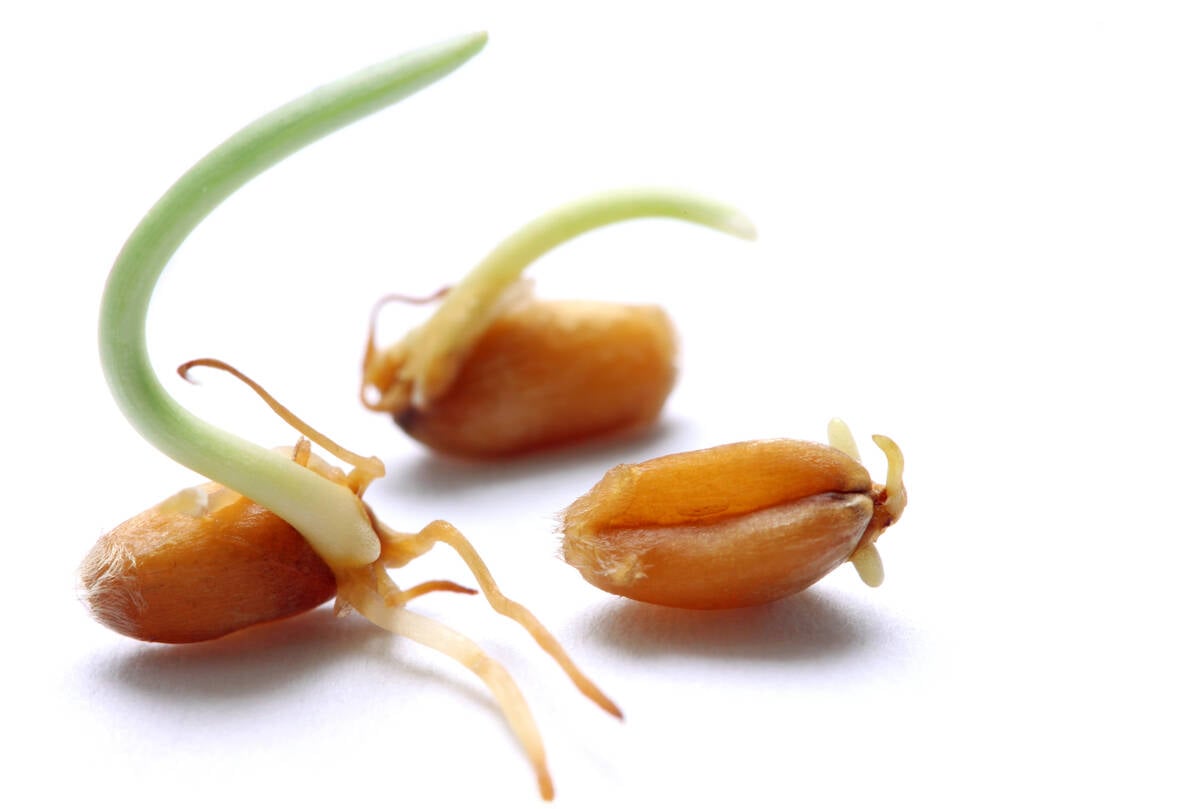RED DEER – An alien plant species landing in a farmer’s field can be beautiful but deadly.
“If it is growing and green, people assume it is a good thing,” said Sarah Nevill of the society that oversees the Weaselhead Special Protection Area in southwestern Calgary.
She told a recent meeting of the Alberta Invasive Plants Council in Red Deer that unwanted plants have invaded the park, which the public assumes is native if they see wildlife eating or living among them.
Read Also

Manitoba farmers fight sprouted wheat after rain
Rain in mid-September has led to wheat sprouting problems in some Manitoba farm fields.
Non-native plants can thrive, spread and choke out the resident plants and take over wildlife habitat. They often have no natural enemies to keep them under control.
Many arrived as imported ornamental plants and were sold to home gardeners because they were showy and grew well.
“Once they get established, they are almost impossible to get rid of,” said Gayah Sieusahai of Alberta Agriculture.
Garden retailers and suppliers are a major challenge because they are in the business of selling attractive plants that grow well.
Sieusahai sends them the provincial weed list and an explanation of the problem, but it is often difficult to locate all smaller nurseries.
Nursery owners agree public awareness is the best approach and favour voluntary codes of practice to keep out unwanted plants.
Larger retailers may have no control over what they sell because a central buying unit within the company buys and distributes the plants, said Dean Falkenberg of Greenview Nurseries in Rockyview County.
However, many of these troublesome plants have been removed from order lists so they cannot be sold.
Nurseries need to show their customers where native plants can fit, even though many home gardeners want big, showy plants.
Invasive species can quickly take over a wetland land, reduce biodiversity and plug up canals.
Plants like yellow flag iris or purple loosestrife are beautiful flowering plants and the public may not realize they are a problem, said Doug Cattani of the University of Manitoba’s plant sciences department.
Other invaders arrive in loads of hay, on trucks or recreational vehicles.
“It’s managing a pest that is going to be here forever,” he said.
“We’ve probably created all the problems.”
These weeds are almost impossible to remove once they infest a hayfield or pasture. Weed seeds can be missed when a seed sample is checked because they might not be in the lot that was inspected.
Keeping track of them is also difficult.
A 1999 Manitoba knapweed study and a follow-up 10 years later found that 1.2 million acres were infested, or 3.5 times more than what previously existed.
The dramatic change may not have been the result of significant spreading but rather improved reporting systems.
The Manitoba study said seven municipalities ranked the problem as high, 15 said the impact was modest, 39 reported low levels and 21 had only traces of the weed.
Municipalities usually handle weed control, but short growing seasons and limited staff and money force them to set priorities.
They can track the weeds and implement controls, but they also need to enlist the help of volunteers from garden clubs and conservation districts.
Together they have to figure out how a species is reported and verified and plan how to remove it.
Several initiatives are underway in Alberta.
New weed location maps are being developed and an invasive alien species working group was started in 2006.
The working group should have its plans together this year to develop a provincial database that co-ordinates all the information on where these plants are a problem and how they may spread.
Chris Neeser of Alberta Agriculture is developing the maps because no comprehensive ones exist. Maps can help monitor whether weed populations are contained or spreading and determine their abundance.
“There is a lot of data out there that is only partially usable,” he said.
Neeser is working with local experts such as agricultural fieldmen employed by counties and municipal districts.
The first priority is to develop maps in the province’s agricultural areas. They should be ready by late fall.
The next phase of the mapping project will involve contacting parks, municipalities, First Nations and Sustainable Resource Development because it manages crown grazing lands and forestry reserves.















